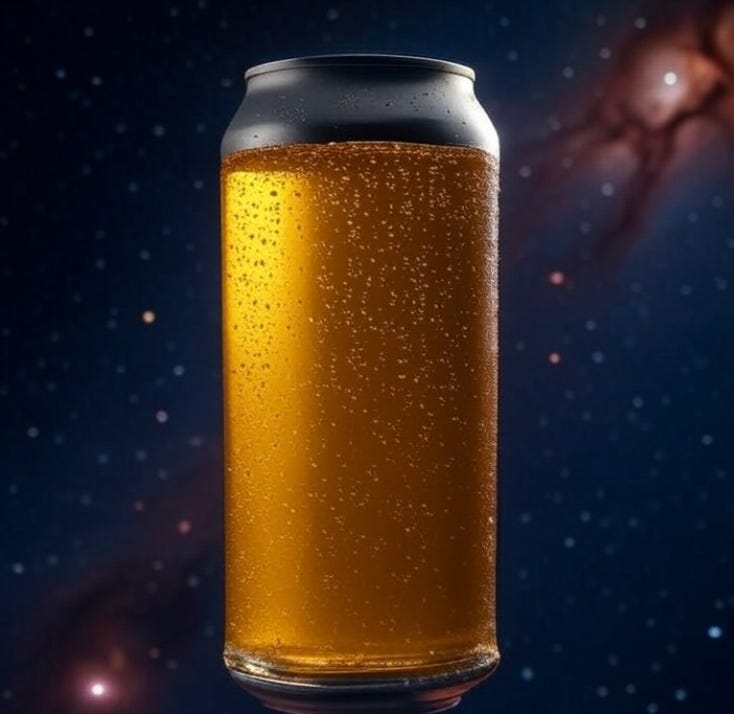Vermont's Craft Beer Scene: The End of an Era or a New Beginning?
It's not just economic headwinds brewers are facing. Consumer tastes are changing. The market is now saturated with alternatives, from hard seltzers and ready-to-drink (RTD) canned cocktails.
For years, Vermont has been the undisputed king of craft beer, boasting more breweries per capita than any other state and a reputation for world-class IPAs that had beer lovers flocking to its green mountains.1 Names like The Alchemist, Hill Farmstead, and Lawson’s Finest Liquids became legends. But the explosive growth that defined the last decade has cooled, leaving many to wonder if the golden age of Vermont beer is over.
While the state still holds its top per-capita ranking, the industry is facing its first significant downturn. After peaking at a reported 78 breweries in 2022, the number dropped to 74 the following year, according to the Burlington Free Press. This local trend reflects a national reckoning, signaling a new, more challenging chapter for brewers.
A National Slowdown Hits Home
The craft beer boom that swept the nation for over a decade has officially hit a plateau. For the first time since 2005, the U.S. saw more breweries close than open in 2024, according to the national Brewers Association. The reasons are a potent cocktail of economic pressures.
Brewers are grappling with the lingering effects of the pandemic, including persistent supply chain disruptions and soaring costs for essential ingredients like aluminum cans, carbon dioxide, and malt.2 Add in broader inflation and rising labor costs, and the profit margins on a six-pack have become razor-thin.
This pressure has led to the heartbreaking closure of several beloved Vermont institutions. In early 2024, Brattleboro’s renowned sour ale producer, Hermit Thrush Brewery, announced it was closing its taproom and ceasing distribution, citing overwhelming debt. Other recent closures have included Simple Roots Brewing in Burlington and Farm Road Brewing in Bennington.3 Natural disasters have also played a role; Outer Limits Brewing in Proctorsville was forced into a difficult fight for survival after devastating flooding in 2023.
Shifting Tastes and a Crowded Market
It's not just economic headwinds brewers are facing. Consumer tastes are changing. The market is now saturated with alternatives, from hard seltzers and ready-to-drink (RTD) canned cocktails to cannabis-infused beverages and a growing variety of non-alcoholic options.
"It’s death by a thousand cuts," said one industry analyst. Younger drinkers, in particular, are showing less brand loyalty and are often seeking beverages that are lower in calories and alcohol.4 This has forced breweries to compete for a smaller share of the overall alcohol market. The days of simply brewing a great IPA and expecting customers to line up are fading. The market has matured, and the competition is no longer just the brewery down the road—it's every beverage in the cooler.
Pivoting to Survive: How Vermont Brewers Are Adapting
Despite the challenges, Vermont's craft brewers are not going down without a fight. They are resilient, innovative, and are deploying a range of strategies to stay competitive in this new landscape. The core of the new playbook is a shift from wholesale distribution to creating a destination experience.
1. The Taproom as a Destination: Rather than relying on selling cans to grocery stores, which offers slim margins, breweries are doubling down on their taprooms. By creating vibrant, welcoming spaces with food, live music, and events, they transform their locations into community hubs. This direct-to-consumer model is far more profitable and builds a loyal customer base. Lawson’s Finest Liquids in Waitsfield is a prime example of this success. Their world-class brewery and taproom have become a major tourist destination, drawing visitors for the full "Vermont beer" experience, not just the liquid in the glass.
2. Diversifying the Menu: Recognizing the changing palate of consumers, breweries are expanding beyond beer. Many are now producing their own hard seltzers, ciders, and high-quality non-alcoholic (NA) beers to capture customers who may not want a high-octane IPA. This "something for everyone" approach ensures that no one in a group feels left out. Vermont's own Athletic Brewing, which produces exclusively non-alcoholic beer, has become one of the fastest-growing beverage companies in the country, proving the vast potential of this market segment.
3. Focusing on Niche and Quality: In a crowded market, quality and a unique identity are more important than ever. Instead of trying to be everything to everyone, some brewers are focusing on perfecting niche styles, sourcing local ingredients, and maintaining the hyper-focus on quality that first put Vermont on the map. This commitment to craft helps them stand out from mass-market competitors.
What Happens Next?
The era of explosive, uninhibited growth for Vermont's craft beer industry is over. The market has matured, and a period of correction is underway. It is likely that more closures will occur as the industry finds its new equilibrium.
However, this is not a death knell—it's an evolution. The breweries that thrive in the coming years will be the ones that are nimble, creative, and deeply connected to their communities. They will be masters of the customer experience, offering not just a great product but a great place to enjoy it. They will be smart business operators who diversify their offerings and adapt to changing tastes without sacrificing the quality that defines their craft.
The Vermont beer scene is not disappearing; it is transforming. The passion, innovation, and commitment to quality that built this industry are the very tools brewers are now using to navigate its future. For consumers, this means that while there may be fewer breweries, the ones that remain will be stronger, more resilient, and more creative than ever.



